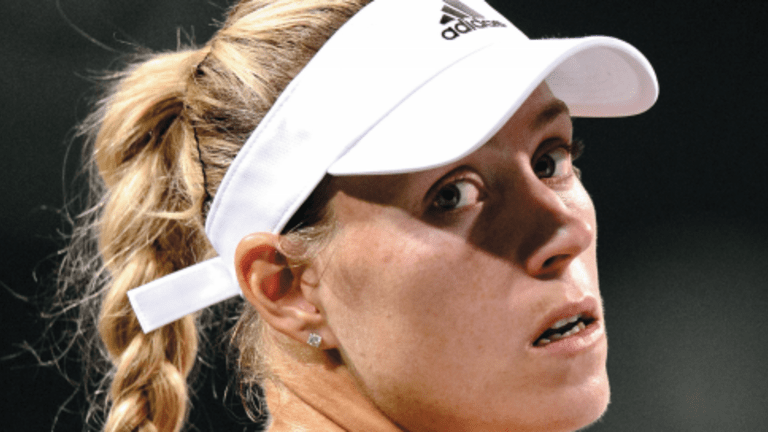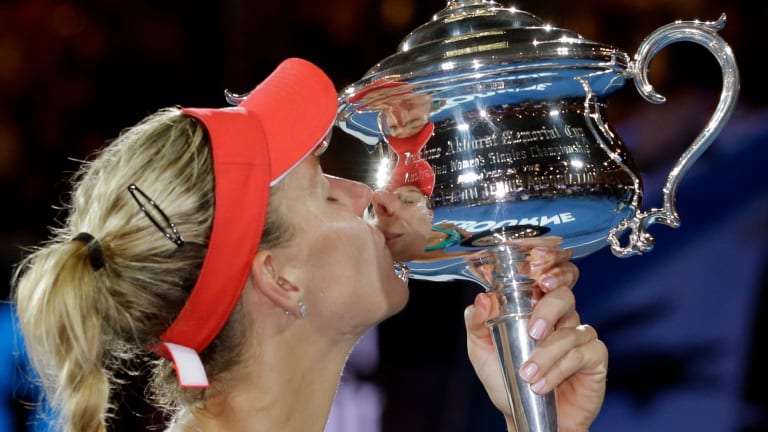Kerber was already 28 years old when she won her first Grand Slam title at the 2016 Australian Open. That made her predictable comment—“It’s a dream come true”—sound a little less cliché, because by that age most Slam-less players have given up on the idea of winning major titles. In addition, few players have ever conquered a history of self-doubt as comprehensively as Kerber did in the course of that enchanted season.
A stealth contender from the get-go, Kerber is German, but with a Polish asterisk. Her father is ethnic German from Poland, her mother is a full-blooded Pole. Kerber speaks the Polish language, and she currently resides in the Polish town of Puszczykowo.
Kerber remained under the radar of German tennis officials and coaches early on. As well, she was overshadowed in a rising generation that included flashier, hard-hitting players like Andrea Petkovic, Sabine Lisicki and Julia Goerges. This group set about rekindling interest in women’s tennis in Germany, a nation that hadn’t placed anyone in the year-end WTA Top 10 since Steffi Graf in 1996.
Kerber had athletic gifts, though they wouldn’t come to the fore until she was well along her career path. A low center of gravity enhanced her outstanding mobility, but only after her lower-body musculature developed. Her timing is an excellent, if subtle, skill, while her ability to re-direct the ball without telegraphing its destination is a talent that developed incrementally. Kerber is a great example of a player who just couldn’t be rushed.
But Kerber also benefited from the truth in that old saw, “A rising tide lifts all boats.” The players of her generation inspired, motivated and challenged her, particularly Petkovic, who invited Kerber to train with her at a German sports academy to prepare for the 2011 US Open.
“[Petkovic] said, ‘Just go on the court, play your tennis,’” Kerber remembered. “She helped me a lot.’’
With Petkovic’s support, the 92nd ranked Kerber punched through to the semifinals in New York. Before that, she had won successive matches at a major on just two occasions. It was the turning point of her career, as Kerber would explain in 2016.
“I was playing good tennis before 2011, but I never took my chances,” she said. “Since then, I’ve been taking my chances. I show everybody, I show myself, that I can play. I’m one of the best players in the world.”
Kerber thrives on encouragement and reassurance. She received a similar boost from Graf, her childhood idol, during a training session in Las Vegas, which played a role in her next and most resounding breakthrough, at the 2016 Australian Open.
“[Graf] was just telling me that I’m on a good way, and giving me positive comments,” Kerber said. “She said that I should believe in myself and everything is good.”
Self-belief is a great start for success, but it isn’t always enough to turn a contender into a champion. To that end, Kerber made some key changes as 2016 approached. She ramped up her fitness and practiced with greater intensity in order to feel more comfortable when she began pursuing a more aggressive game plan. She decided to free up her forehand and exploit her natural advantage as a lefthander when serving. While she’ll never be an ace machine, Kerber’s sneaky lefty slice is a valuable tool, one she began to refine.
With newfound playing purpose, Kerber was assertive in Melbourne— and it paid off. After defeating twotime champion Victoria Azarenka in the quarterfinals, Kerber stunned Williams in a three-set final. Williams would get her revenge at Wimbledon, but Kerber sewed up the No. 1 ranking at the US Open, where she topped off her Slam season with a win over firsttime major finalist Karolina Pliskova.
And then it all went away.

